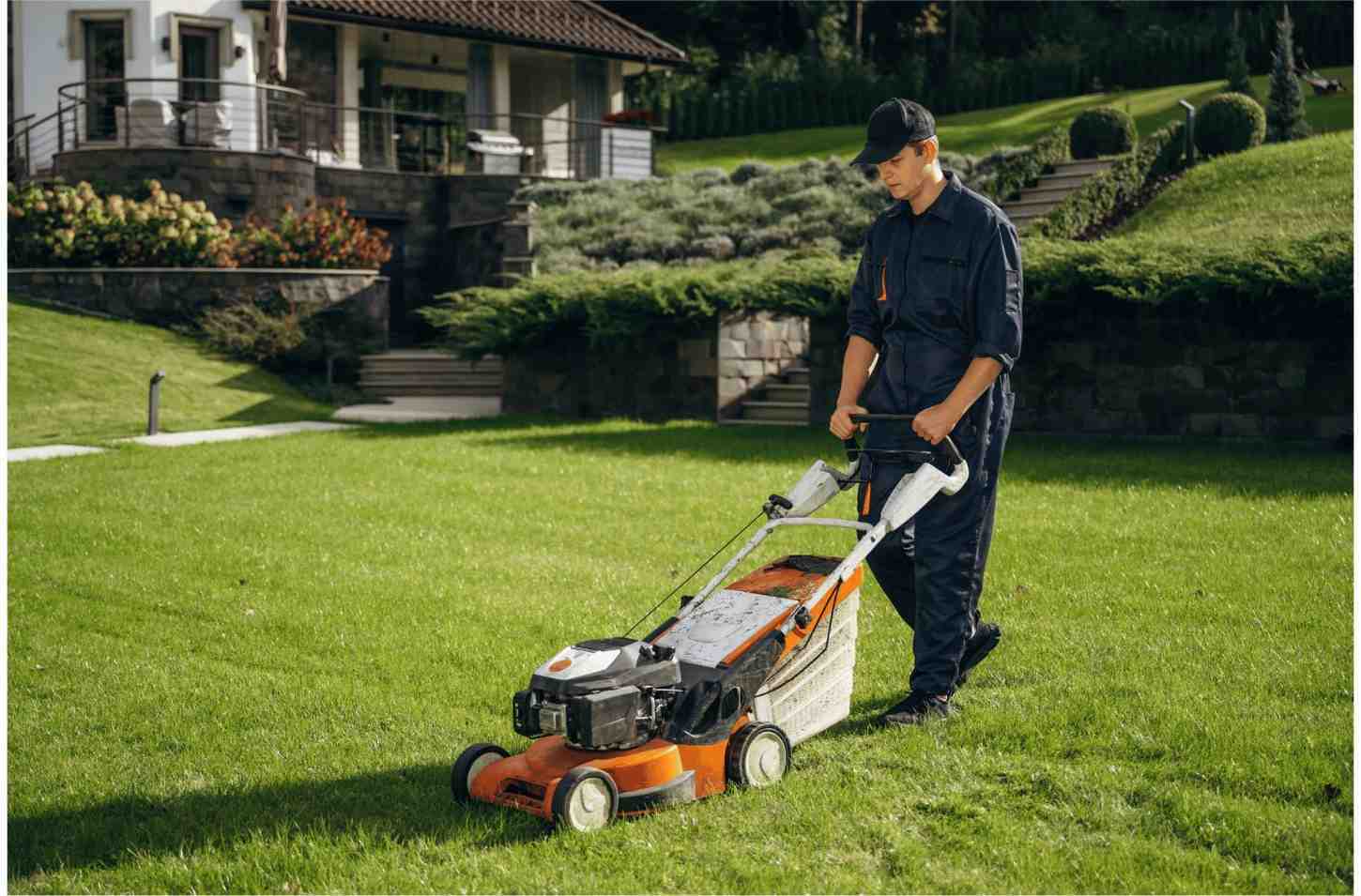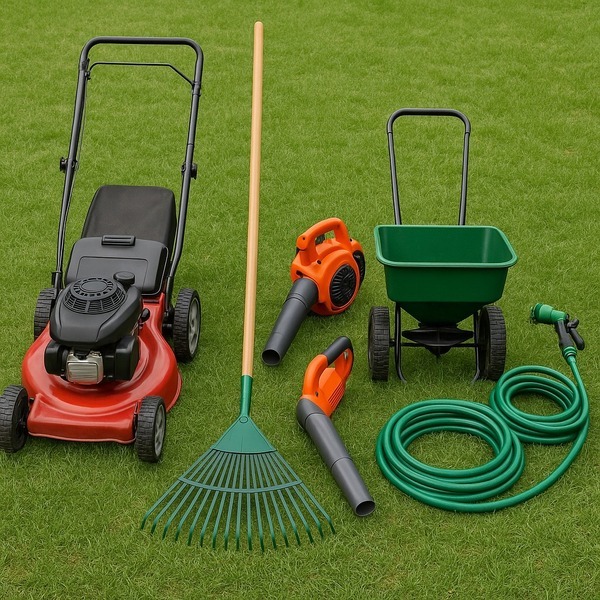Lawn Mower Maintenance Tips for Healthier Grass and a Cleaner Cut
A well-kept mower isn’t just easier to use—it plays a huge role in how your lawn looks. A dull or poorly maintained mower can shred grass blades instead of cutting them cleanly, making your yard more vulnerable to stress, disease, and browning.
If your goal is a thicker, greener lawn (and let’s be honest—who doesn’t want that?), routine lawn mower maintenance should be part of your spring lawn care routine. Let’s cover what to check, how often to do it, and why sharp mower blades matter more than you might think.
Why Sharp Blades Make a Difference
Cutting your lawn with dull blades is like using a butter knife to slice an apple—it’ll get the job done, but not well. Instead of a clean cut, your mower tears the grass, leaving ragged edges that:
- Lose moisture faster
- Turn brown at the tips
- Invite disease and fungal issues
By sharpening your mower blades regularly, you’ll get a cleaner cut that supports strong, healthy grass growth—and a better-looking yard.
We recommend sharpening your blades every 20–25 mowing hours. For most homeowners, that’s about twice per season: once in spring and again midsummer.
Or, bring your mower into a local shop that offers blade sharpening (often for less than $15 per blade).

The Ultimate Lawn Mower Maintenance Checklist
Start each season off right by giving your mower a quick tune-up. Whether you have a gas-powered push mower or a riding mower, the basics are the same:
- Change the oil
Dirty oil makes your engine work harder. Drain and replace the oil if it looks dark or sludgy. - Replace or clean the air filter
A clogged air filter reduces airflow and performance. Foam filters can be rinsed; paper filters should be replaced. - Check the spark plug
If it’s black or cracked, replace it. A clean spark plug helps the mower start faster and run smoother. - Sharpen the mower blade
Use a metal file or blade sharpener—or take it in for service. Be sure to wear gloves and disconnect the spark plug before removing the blade. - Clean the undercarriage
Caked-on grass reduces airflow and clogs your mower. Scrape it clean with a plastic putty knife. - Check tire pressure (for riding mowers)
Even tire pressure ensures a level cut and reduces strain on the mower’s engine. - Top off fuel with a stabilizer (if storing for winter)
Fuel stabilizer prevents your gas from going stale, which can clog carburetors over time.
Why It Matters for Your Lawn's Health
Your lawn mower is one of the most-used tools in your shed—but it’s also one of the most neglected. Keeping it in shape means your lawn gets the even, consistent cut it needs to grow stronger roots and bounce back from foot traffic, heat, and pests.
Mowing with a dull or uneven blade puts stress on your grass and invites problems down the road—like discoloration, thatch buildup, or bare spots. So if you’re already investing in fertilization, irrigation, and weed control, don’t let a rusty blade undo all that effort.
At TLC, we help homeowners protect their investment with expert advice and local lawn care support you can count on. If you are struggling to maintain thick and green grass all year long, visit our tailored seasonal lawn care service options — we’re here to help!
Spring Lawn Care FAQs
Sharpen them every 20–25 mowing hours, or about twice per season for most homeowners. This helps ensure a clean cut and healthier grass blades. Neglecting blade sharpening can cause turf damage over time.
Yes, with a metal file, grinder, or blade sharpener, but always follow safety precautions. If you're unsure, a local shop can do it quickly and affordably. Keeping blades sharp saves time and supports lawn health.
Absolutely—it affects how your lawn looks and grows. A poorly maintained mower can damage grass and lead to lawn stress. Routine care also extends the life of your mower.
Yes, even without oil or gas engines. Blades still need sharpening, and the undercarriage should be kept free of clippings. Regular cleaning improves performance and cut quality.



